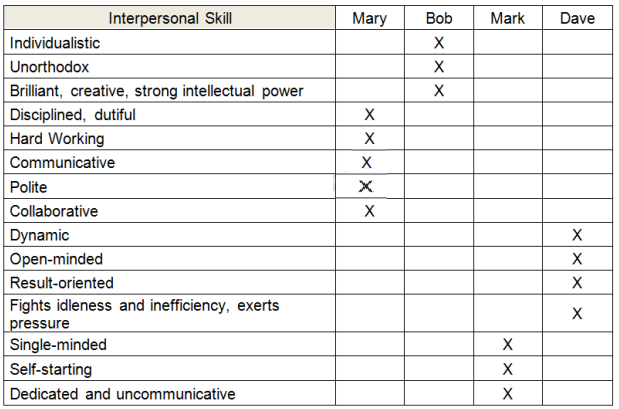At ValidExamDumps, we consistently monitor updates to the ISTQB ATM exam questions by ISTQB. Whenever our team identifies changes in the exam questions,exam objectives, exam focus areas or in exam requirements, We immediately update our exam questions for both PDF and online practice exams. This commitment ensures our customers always have access to the most current and accurate questions. By preparing with these actual questions, our customers can successfully pass the ISTQB Advanced Test Manager exam on their first attempt without needing additional materials or study guides.
Other certification materials providers often include outdated or removed questions by ISTQB in their ISTQB ATM exam. These outdated questions lead to customers failing their ISTQB Advanced Test Manager exam. In contrast, we ensure our questions bank includes only precise and up-to-date questions, guaranteeing their presence in your actual exam. Our main priority is your success in the ISTQB ATM exam, not profiting from selling obsolete exam questions in PDF or Online Practice Test.
You are the Test Manager for a project to develop a web customer portal of a Pay-TV company that allows customers (with a smartcard and a set-top box) to purchase digital contents.
In the "select" page the system displays a dialogue where the customer can select the items (digital contents) he/she is interested in. In this page he/she can add one or more items to a shopping cart. An item consists of a product and a duration.
There are three types of products: Movie, sport and premium (movie and sport).
There are four possible durations: 1 months, 2 months, winter (from the beginning of January to end of March) and summer (from the beginning of July to end of September).
All the combinations of products and durations are allowed to define an item. Thus there are twelve possible items. A maximum of six different items can be added to the shopping cart at a time.
When the customer decides to check out he/she goes to the "purchase" page where he/she can pay the total amount of the shopping cart in three different ways:
- using a credit voucher
- using a credit already charged on the smartcard
- using a credit card (accepted credit cards are. Visa, MasterCard and Great Wall Card)
The customer can logout from both the ''select'' and ''purchase'' pages. In this case no purchase is made.
You decide to apply a blended risk-based and reactive testing strategy and the following is a subset of the exit criteria for system testing:
EXCR1- Each ''critical'' quality risk item must be covered by at least one test condition EXCR2- Each ''critical'' requirement must be covered by at least one test condition You are following a risk-based testing strategy. The test execution time is very limited. Assume that all the product risk items require more or less the same level of test effort.

Which of the following answers describes the best execution schedule in this scenario? K3 3 credits
Assume you are managing the system testing phase of a project.
The system test execution period is scheduled to twenty weeks.
All tests are manual tests. You are following a risk-driven test approach.
During the last staff meeting the project manager tells you new deadlines that will not allow completion of all the system tests.
Which of the following would you expect to be the best way to respond to this situation? K2 1 credit
Your test team consists of four members (Mary, Bob, Mark, Dave) with different interpersonal skills. The following skills assessment spreadsheet shows the characteristics of the team members with respect to a list of interpersonal-skills (for each characteristic only the member with the highest level of that characteristic is indicated and marked with 'X'):

On the next project a member of your test team will have to perform some routine tasks requiring collaboration with other teams. Who in your test team would you expect to be most suitable at doing these tasks? K4 3 credits
The following are the exit criteria described in the test plan of a software product:
EX1. The test suite for the product must ensure that at least each quality risk item is covered by at least one test case (a quality risk item can be covered by more test cases).
EX2. All test cases in the test suite must be run during the execution phase.
EX3. Defects are classified into two categories: ''C'' (critical defect) and ''NC'' (non-critical defect).
No known C defects shall exist in the product at the end of the test execution phase.
Which of the following information is useless when the specified exit criteria is evaluated? K2 1 credit
Assume that the following test cases have been executed at the end of the first week of test execution: TC-001, TC-002 and TC-007. All these tests are 'passes'.

What is the MINIMUM number of the remaining test cases that must be successfully executed to fulfill the EX1 exit criteria?
K3 2 credits